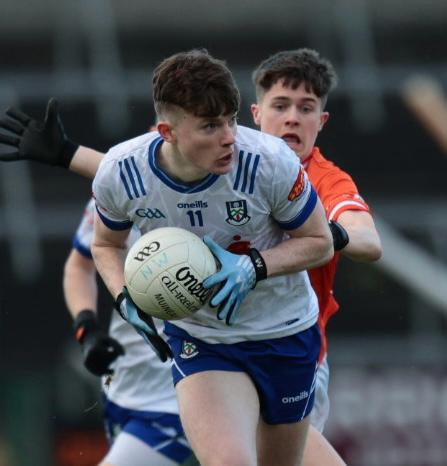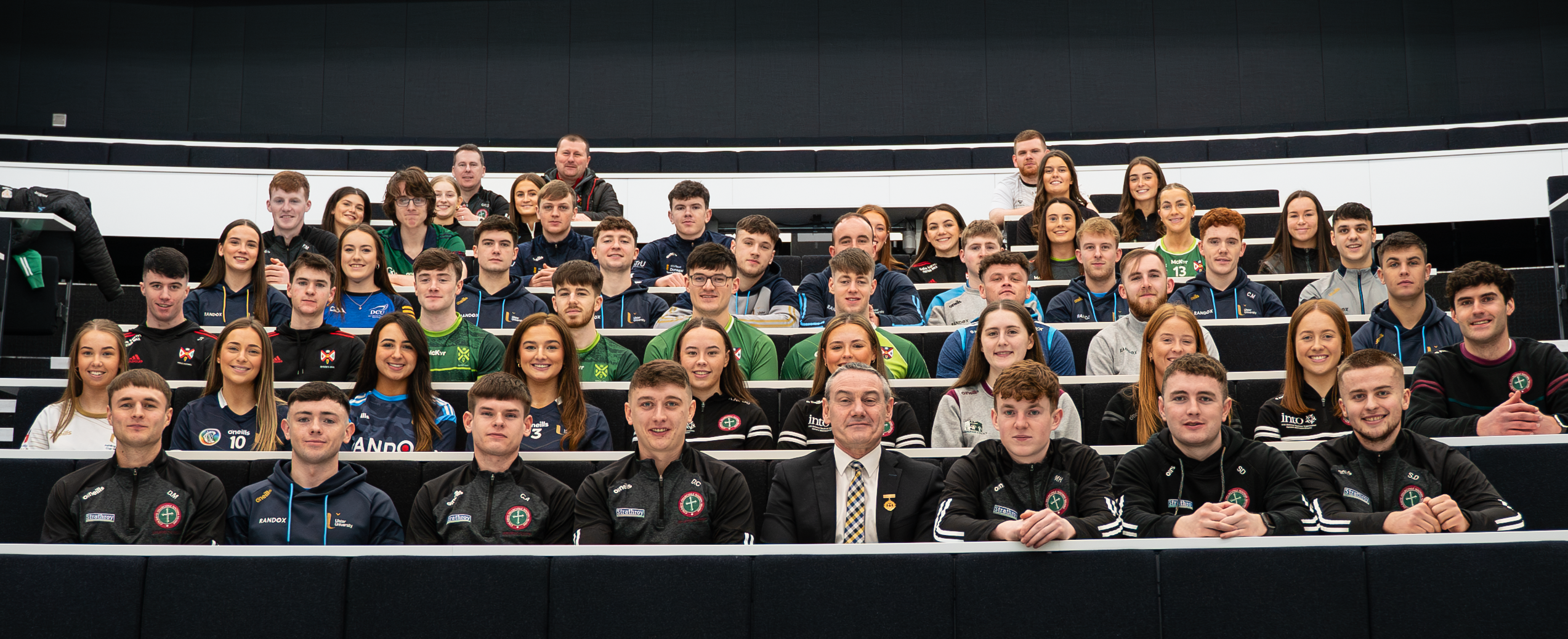Donegal v Monaghan Statistical Analysis
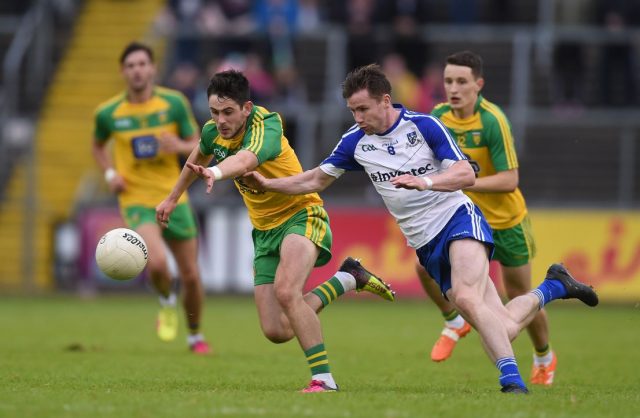
Performance analysis has become a major component of the coaching process. A combination of statistical information and video clips allow coaches to analyse performance and provide feedback on both individual and team performance. The same process also allows a coaching team to establish positives and negatives from each performance, and should provide them with a guide as to the needs of the team in subsequent training sessions.
Throughout the Ulster Senior football championship 2016, Ulster GAA will be providing statistical analysis, supported by video clips analysing each game.
Possession
Possession is considered a key factor in match analysis, despite the fact little evidence exists to suggest superior possession share relates to successful outcome. In many sports, possession is measured as percentage of time spent on the ball. However, in GAA, it is more pertinent to assess possession as a count – the number of possessions each team has during a game.
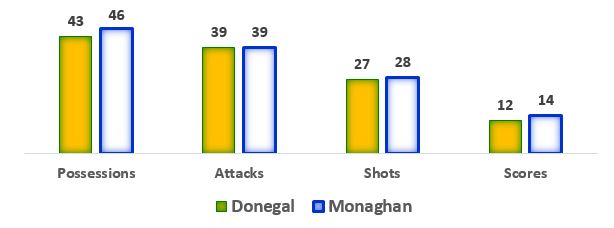
Monaghan had a marginal advantage in possession stakes, gaining control of the ball on 46 occasions to Donegal’s 43. Both were very effective at getting into their opponent’s defensive third, with Donegal slightly more clinical, getting 91% of possessions into an attacking position, while Monaghan got 85% into the Donegal defensive zone. As well as having more possessions, Monaghan had a slightly better return rate – taking scores from 30% of possessions, while Donegal managed 28%.
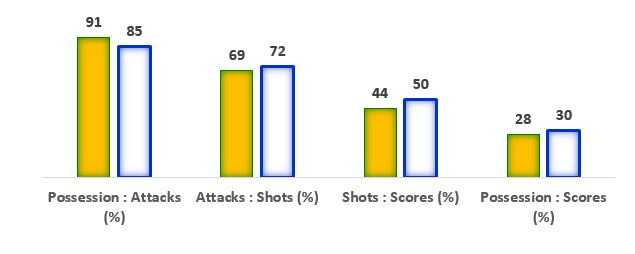
Monaghan won 57% of the kick outs in the match, reflecting their advantage in the possession contest. Monaghan’s dominance at kick outs was due to their approach to their own kicks, with a clear preference for short kick outs. On top of short kick outs, many of their longer kicks were well directed to unmarked men in space, meaning they were able to secure 82% of their own kicks uncontested.
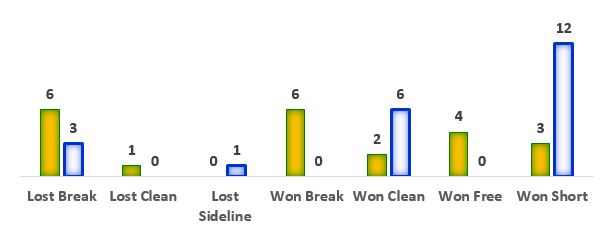
Donegal were less inclined to take short kick outs, only taking 3 during the match. The key reason for this appeared to be in Monaghan’s set up for Donegal kick outs, pushing up to man mark the Donegal defence and deny short kick opportunities as often as possible. Donegal can take encouragement from their performance under contested kick outs, where they won 55%. If Donegal can deny Monaghan as many short kick outs in the replay it is likely they can sway the kick out battle in their favour, through dominance of contested kick outs.
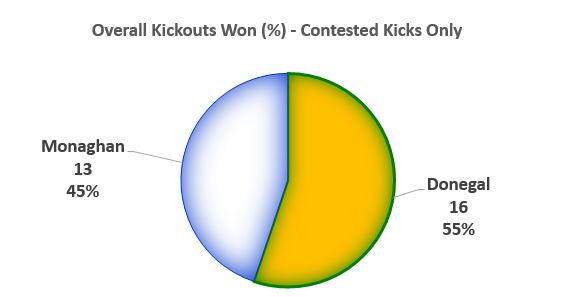
The turnover count in this game was in line with the USFC average for 2016, with Monaghan coughing up 21, and Donegal losing 20 possessions. What is of most interest is where on the pitch possession was lost. Donegal only lost 4 possessions without progressing into the Monaghan defensive zone, while Monaghan lost 7 possessions in a similar fashion. Of these 11 total possessions lost, 9 resulted in an opposition shot in the subsequent possession. Donegal conceded 0-2 directly from their 4 lost possessions, while Monaghan conceded 1-2 from the 7 possessions lost.
The ley learning point here is two-fold;
- The importance of taking care of possession in defensive and central areas (outside the opposition 45m line);
- The importance of pressurising a team as much as possible in their defensive areas, given that the reward for forcing a turnover is highly likely to be a shooting opportunity.
Shooting Efficiency
Added to their possession advantage, and greater shot count (Monaghan – 28, Donegal – 27), Monaghan were more clinical in front of goal, with a shot success of 50%, to Donegal’s 44%. Both kicked the same number of wides and had the same number of shots short. The crucial difference between the success rates of both teams lay in one shot, which happened to be an effort on goal by Donegal, that was well saved.
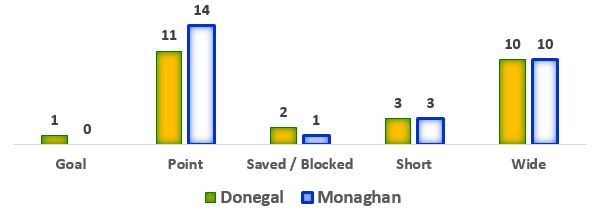
The tendency is to attribute poorer shooting returns to better pressure than either team experienced in their quarter final. Bear in mind, Donegal fell from 61% v Fermanagh to 44% v Monaghan, while Monaghan fell from 65% success v Down to 50% v Donegal. However, video footage makes it quite clear that there was a significant number of shots, from both teams, that fell wide or dropped short even though they were taken under little or no pressure – including a number of place kicks that both teams will be disappointed not to convert.
Productivity
Monaghan held marginal advantages across a range of statistics, however, Donegal were the more productive with their possessions, for no other reason than they managed to register a major score in the second half. Their goal meant they scored 3.3 points per 10 possessions, while Monaghan managed just 3.0. Their better productivity enabled Donegal to compensate for having less possession and an inferior shot success rate.
The game is balanced on fine margins. One incident worth noting was that Monaghan had created one potential goal opportunity, but failed to register a shot due to a simple handling error at the point of the last pass.
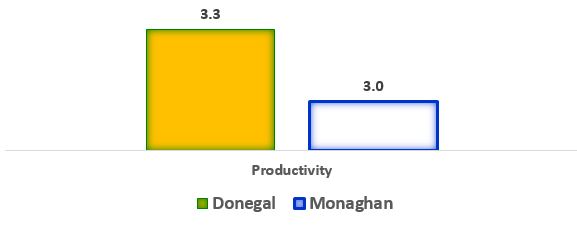
Donegal – lessons for training
Both teams will be looking for small gains ahead of the replay, in the hope that their gains amount to a greater sum than their opponent.
Donegal may look to the following as areas worth addressing in the hope of swaying the balance in their favour;
- Pushing up for Monaghan kick outs. So far Monaghan have registered 2 performances winning over 80% of their own kick outs, mainly in the form of short kick outs – winning both overall kick out battles. Donegal fared better in contested kicks than Monaghan. Pushing up on Monaghan kick outs could reduce their short kick out options, leaving Donegal with a better chance of winning more kick outs and ultimately more possessions;
- Shot conversion – Donegal’s finishing was uncharacteristically poor last weekend, converting only 44% of chances. Of particular disappointment would have been their place kicking, they had 2 place kicks come up short and 4 wide. Improvement in shot conversion, combined with an even share of possession may be enough to help Donegal over the line;
- Pressurising Monaghan in deeper areas – Donegal forced Monaghan to turnover just 7 times before getting inside their 45m line, their reward was 1-2 from the subsequent possessions. While it means Donegal may have to push a couple of extra players out from their defensive zone, the potential rewards are clear from turning a team over in their defensive zone.
Monaghan – lessons for training
Monaghan could potentially look at the following areas to improve upon ahead of the replay;
- Creating greater pressure to prevent Donegal mounting attacks. Donegal were able to generate attacks from all but 4 of their possessions, but on the 4 occasions Monaghan did dispossess them they managed to get a shot away each time, scoring from 2 of the shots.
- Shot conversion – as with Donegal, Monaghan’s shot success was reduced significantly from their Quarter final v Down. While they did not have the same issues from place kicks, there were a significant number of shots taken under little or no pressure, from good shooting positions, meaning their shot execution has room for improvement;
- Monaghan recorded 1 more turnover than Donegal, but it could have proved crucial, and was the only turnover in the match (from either team) that could have been labelled as ‘unforced’. A potential goal chance that did not materialise due to a poor handling error at the point of the last pass. A small mistake, but so crucial to the outcome of the game, something Monaghan will be keen to avoid in the replay.





